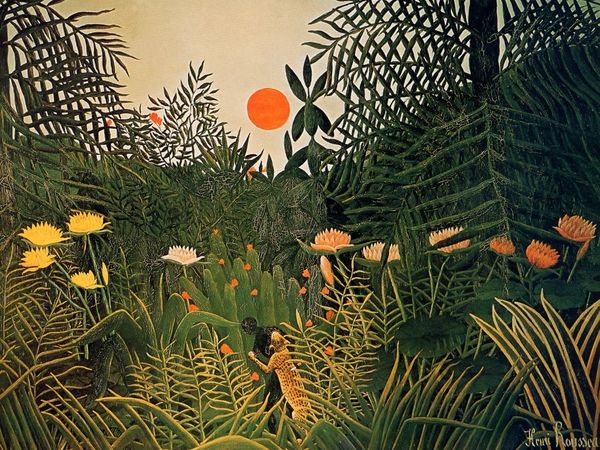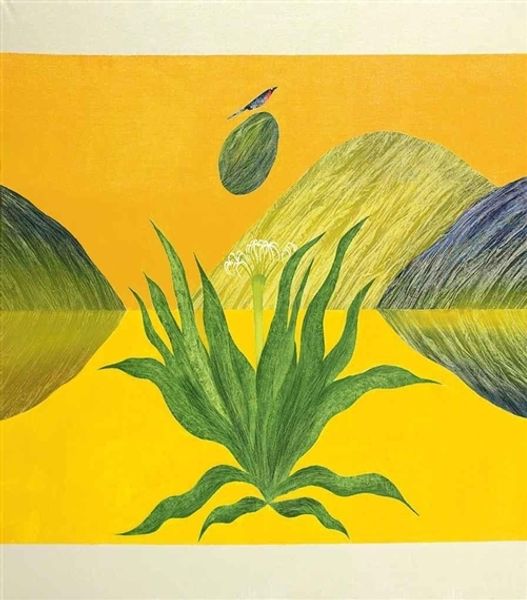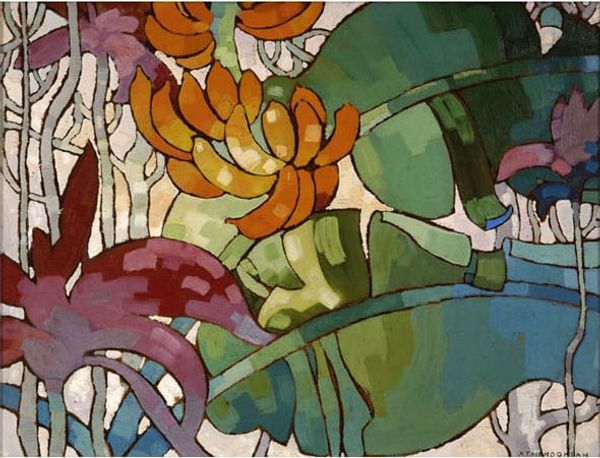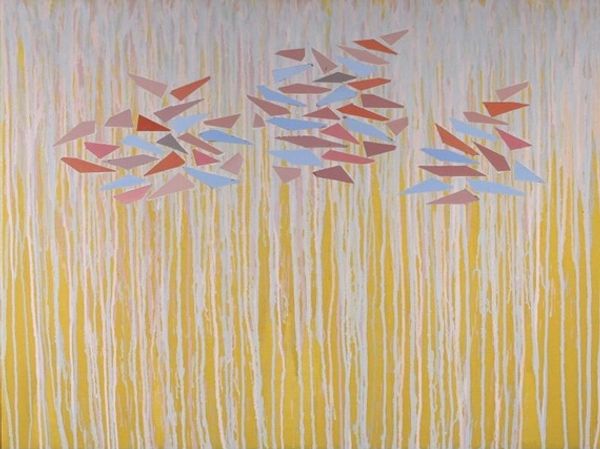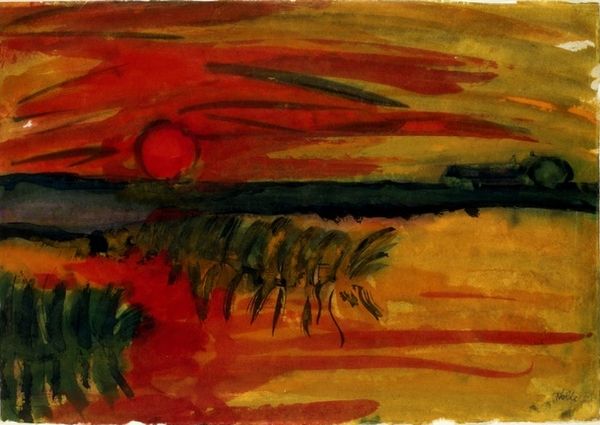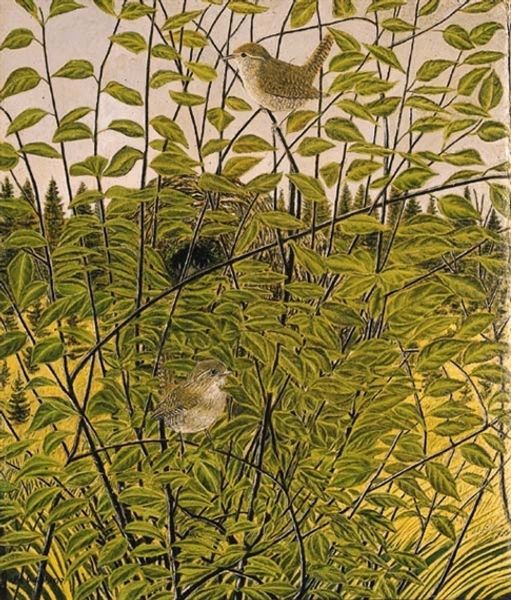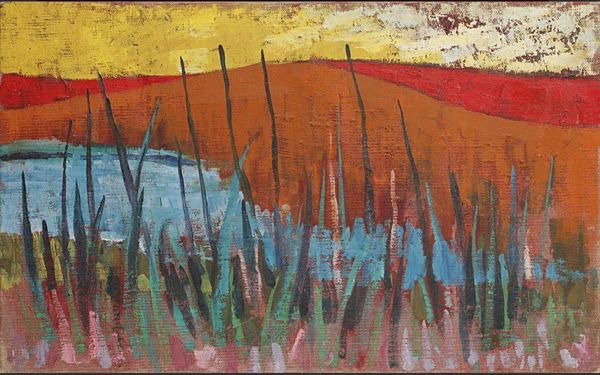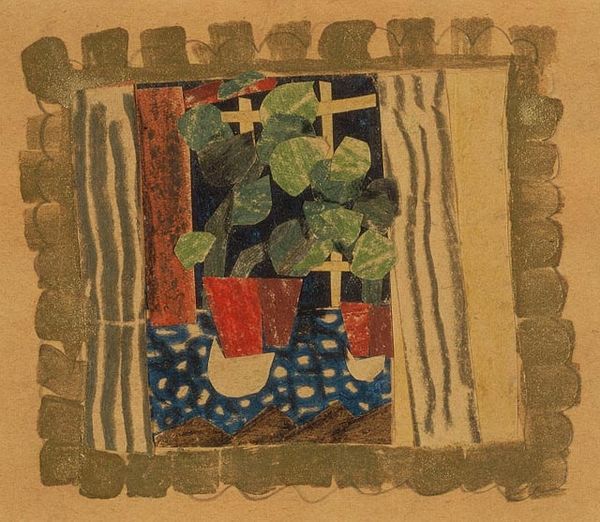
#
childish illustration
#
egg art
#
graffiti art
#
street art
#
flower
#
mural art
#
handmade artwork painting
#
street graffiti
#
spray can art
#
plant
#
wall painting
#
watercolour illustration
Copyright: Public domain
Curator: The piece before us is titled "Iris", a woodblock print crafted in 1856 by the hand of Utagawa Hiroshige. The subject is irises by water in what seems to be the Japanese style, Ukiyo-e. Editor: My first impression is one of quiet melancholy. The muted color palette and stark, graphic style evoke a sense of subdued beauty. It almost feels like a memory rather than a vibrant scene. Curator: That melancholic aspect is certainly a fascinating element. Irises, you see, hold a rather complex symbolism, particularly within Japanese art. They can represent nobility, purification, but also protection against evil. Editor: Given that the print was created in the mid-19th century, during the late Edo period, is there a sociopolitical context to consider here? Were the irises perhaps subtly commenting on the shogunate, or societal expectations? Curator: Interesting interpretation. Though direct political commentary was risky at the time, artists could use symbolism in a more subdued way. The placement of the flowers in water might allude to themes of adaptability and resilience during a time of changing power structures. I read water as purification in that context. Editor: The limited color palette and the rather flat, graphic style are both typical of ukiyo-e. It creates an aesthetic accessible to a wide audience, which feels radically democratic for its time. And in modern interpretations, one might look at how nature itself and people's interactions with the land transcend temporal regimes of power and change. Curator: You make a solid point; the ukiyo-e style democratized artmaking and the dissemination of these pieces to a greater audience in the region and internationally. Even today the format is familiar, but so powerful. The symbol-infused image transcends time, giving a new feeling for the flower to each viewer. Editor: Agreed. It speaks to the enduring power of art to capture a fleeting moment, a particular feeling, or an observation, but one that still resonates across decades and differing political realities. It leaves me wondering how later Japanese activists co-opted images like this for social statements. Curator: Yes! Considering those historical reverberations and symbolic gestures of a simple Iris, I see an emblem of peace but a potential catalyst for social justice, all captured in this poignant snapshot in time.
Comments
No comments
Be the first to comment and join the conversation on the ultimate creative platform.

